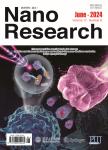Efficient bifunctional catalysts of CoSe/N-doped carbon nanospheres supported Pt nanoparticles for methanol electrolysis of hydrogen generation
作者机构:School of Chemistry and Chemical EngineeringYangzhou UniversityYangzhou 225002China State Key Laboratory of Marine Resource Utilization in South China SeaHainan Provincial Key Lab of Fine ChemistrySchool of Chemical Engineering and TechnologyHainan UniversityHaikou 570228China
出 版 物:《Nano Research》 (纳米研究(英文版))
年 卷 期:2022年第15卷第10期
页 面:8936-8945页
核心收录:
学科分类:081702[工学-化学工艺] 08[工学] 0817[工学-化学工程与技术] 0806[工学-冶金工程] 0805[工学-材料科学与工程(可授工学、理学学位)] 080502[工学-材料学] 0703[理学-化学]
基 金:supported by the National Natural Science Foundation of China(No.21972124) a project funded by the Priority Academic Program Development of Jiangsu Higher Education Institution.L.G.F.also thanks the support of the Six Talent Peaks Project of Jiangsu Province(No.XCL-070-2018) the support of Yangzhou Municipal Science and Technology Planning Project(No.YZ2020028).
主 题:bifunctional electrocatalyst methanol electrolysis hydrogen evolution reaction Pt-based catalysts metal-organic frameworks
摘 要:Methanol electrolysis is significant but challenging as an energy-saving technique for electrochemical hydrogen production.Herein,we demonstrated a novel and efficient bifunctional catalyst of CoSe/N-doped carbon nanospheres supported Pt nanoparticles for hydrogen generation via methanol electrolysis;high catalytic performance for both methanol oxidation(MOR)and hydrogen evolution(HER)was observed benefitting from the effective interaction of metal and support effect as well as the oxophilic characteristics of cobalt selenide.Theoretical calculation disclosed the increased charge density of Pt induced by the CoSe/NC support has a bifunctional ability for optimizing the H*adsorption energy for hydrogen evolution reaction and weakening the CO adsorption energy of methanol oxidation reaction.Specifically,the largely improved CO-tolerance ability was observed in the CO-stripping technique,where about 90 mV less of the peak potential for CO oxidation than that of Pt/C catalyst was observed,resulting from a strong electronic effect as indicated by the spectroscopic analysis.The peak current density of 84.2 mA·cm^(–2) was found for MOR,which was about 3.1 times higher than that of Pt/C;and a low overpotential of 32 mV was required to reach 10 mA·cm^(–2) for HER in 0.5 mol·L^(–1) H_(2)SO_(4) with 1.0 mol·L^(–1) CH3OH.When serviced as both anode and cathode catalyst in a methanol electrolyzer,a low cell potential of 0.67 V to offer 10 mA cm^(-2) was obtained,about 170 mV less than that of Pt/C catalyst;moreover,it was 1.1 V lower than that of water-splitting(1.77 V),indicating a promising energy-saving technique for hydrogen generation.They also showed very good catalytic stability and anti-poisoning ability during the catalysis process.This work would help understand the metal-support interaction for hydrogen generation vis methanol electrolysis.



